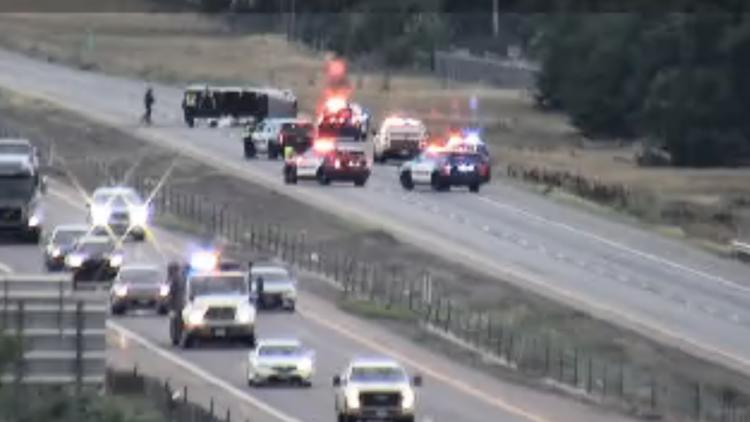
Early Friday morning, a rollover crash led to the closure of the westbound lanes of Interstate 76, causing significant traffic disruptions in the area. The incident occurred just outside Denver, prompting emergency services to respond swiftly to the scene.
The Colorado Department of Transportation (CDOT) announced the closure shortly after the accident was reported, advising commuters to seek alternative routes. The crash, which involved multiple vehicles, has sparked concerns over traffic safety and infrastructure resilience in the region.
Immediate Impact and Response
According to the Colorado State Patrol, the crash was reported around 5:30 a.m., leading to an immediate response from local emergency services. The westbound lanes were closed as crews worked to clear the wreckage and assist any injured parties. Fortunately, no fatalities have been reported, though several individuals were transported to nearby hospitals with non-life-threatening injuries.
The closure of a major artery like I-76 during peak morning hours inevitably led to significant traffic delays. Commuters faced extended travel times as they navigated alternative routes, with congestion spilling over onto local roads and highways.
Context and Background
Interstate 76 is a crucial transportation corridor in Colorado, connecting Denver with other major cities and facilitating the movement of goods and people across the state. The highway’s importance means that any disruption can have a ripple effect on the local economy and daily life.
Rollover crashes, while less common than other types of vehicular accidents, often result in severe consequences due to the potential for vehicle occupants to be ejected. According to the National Highway Traffic Safety Administration (NHTSA), rollover crashes account for nearly 35% of all passenger vehicle fatalities, despite comprising only a small percentage of total accidents.
Expert Opinions and Safety Measures
Traffic safety experts emphasize the importance of regular vehicle maintenance and adherence to speed limits to prevent such incidents. “Rollover crashes are particularly dangerous due to the high likelihood of serious injuries,” said Dr. Emily Carter, a transportation safety analyst. “Ensuring that vehicles are in good condition and that drivers are alert and cautious can significantly reduce the risk.”
The CDOT has been actively working on improving highway safety through various initiatives, including the installation of better signage, enhanced road markings, and public awareness campaigns. However, experts argue that more needs to be done to address the root causes of such accidents, including driver behavior and vehicle design.
Implications and Future Considerations
The closure of I-76 highlights the vulnerability of the region’s transportation infrastructure to unexpected events. As urban areas continue to grow, the demand on highways like I-76 will only increase, necessitating ongoing investment in infrastructure improvements and safety measures.
Looking forward, transportation authorities may need to consider additional strategies to mitigate the impact of similar incidents in the future. This could include the development of more robust traffic management systems, increased monitoring of high-risk areas, and the promotion of alternative transportation modes to reduce reliance on personal vehicles.
As the investigation into the crash continues, authorities are urging drivers to remain vigilant and exercise caution, particularly during peak travel times. The full reopening of I-76 is expected later in the day, once the cleanup and safety inspections are complete.
The incident serves as a stark reminder of the importance of road safety and the need for continued efforts to protect all road users.







